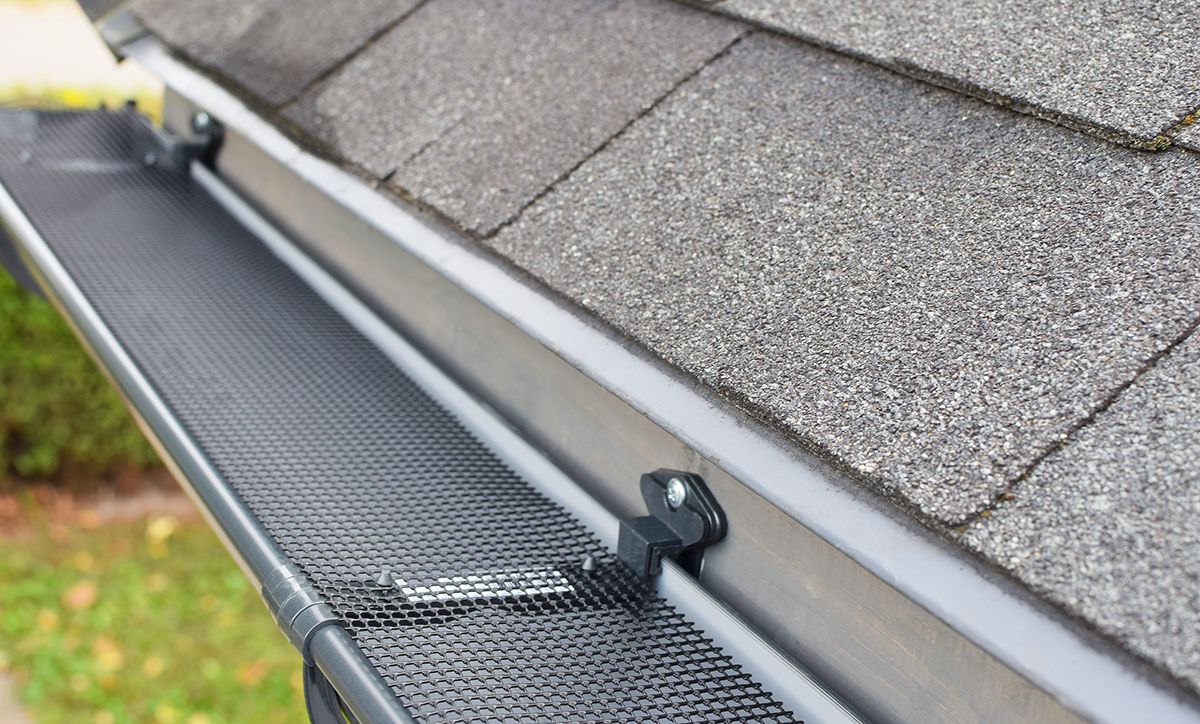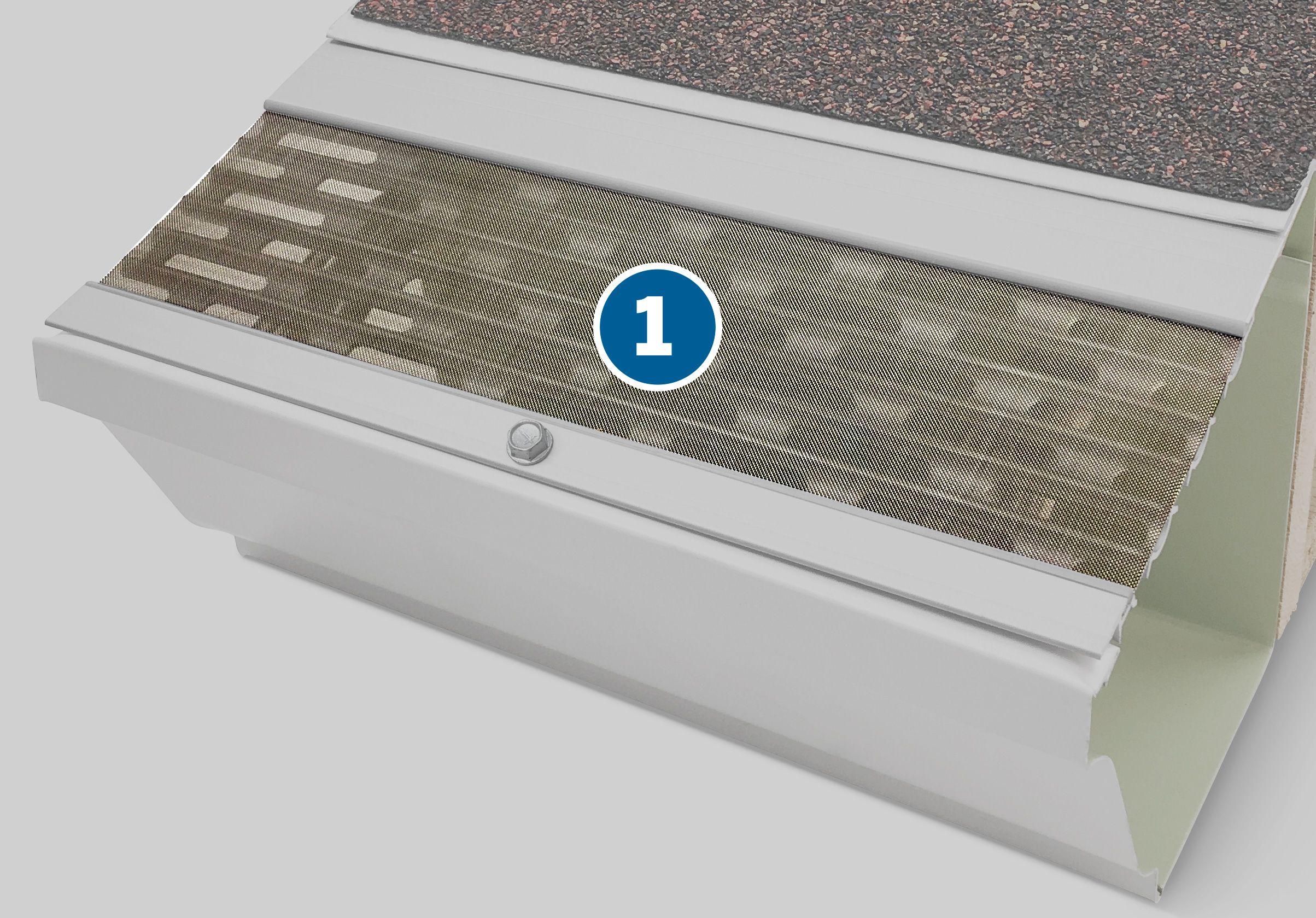
Clogged gutters can lead to water damage, foundation issues, and even pest infestations, and cleaning them is no picnic. Thankfully, homeowners can help prevent clogs with gutter guards, which keep leaves and other debris out of your gutters. When selecting guards, you can choose from a few materials and styles. We’ll walk you through our recommendations below and provide tips for maintaining your system.
1. Stainless-Steel Micromesh Gutter Guards
There are numerous types of gutter guards, including screen, foam, mesh, brush, and reverse-curve. Based on our in-house testing, we’ve found that stainless steel micro-mesh guards are the most effective. These guards use fine mesh screens to keep debris out while allowing water to flow freely through. Here’s why we like them:
- Design: The mesh is pitched to allow debris to slide off easily. This keeps your gutters clean and reduces required maintenance.
- Material: These guards are made from 316-grade stainless steel, which means they’re rust-resistant and built to last.
- Mesh size: Micromesh features 30 or 50 holes per linear inch, so it can filter out small debris such as pine needles or roof granules.
- Water flow: These guards can handle rainfall of up to 150 inches per hour, which means your gutters won’t overflow.
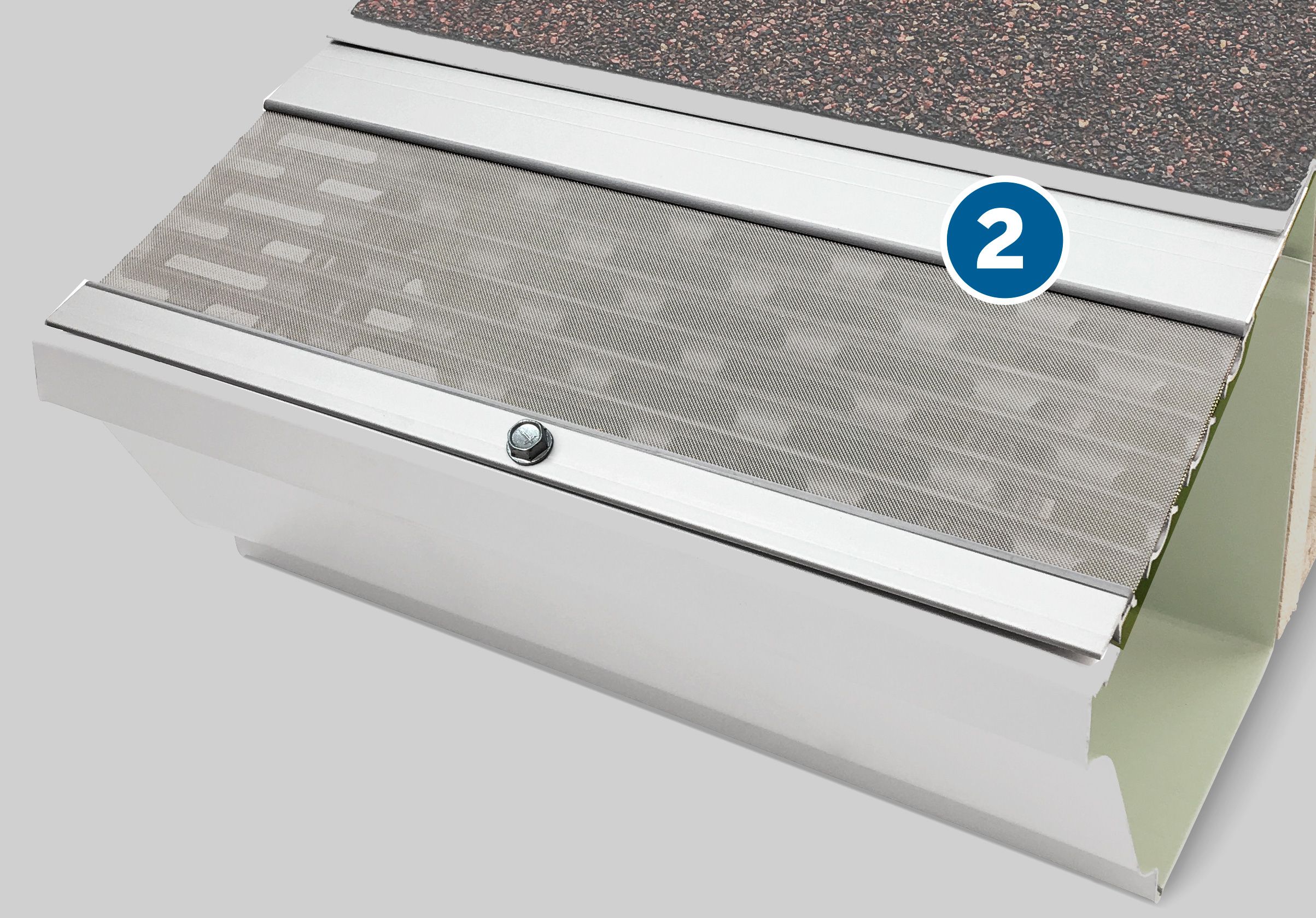
2. Anodized Aluminum Frame Gutter Guards
Gutter guard frames are made from plastic, aluminum, steel, vinyl, or copper. We recommend an anodized aluminum frame because it keeps materials from slipping past the mesh and reinforces the entire system to protect against impacts. It also provides the following benefits to your gutter guard:
- Corrosion resistance: The anodized coating prevents corrosion, and it’s compatible with various gutter materials.
- Durability: Aluminum frames maintain structural integrity for years, unlike plastic alternatives that can become brittle and break.
- Strength: Thick aluminum provides a stiff, permanent backing that keeps the mesh flat, and prevents sagging over time.
The combination of stainless-steel micromesh and an anodized aluminum frame creates a robust gutter protection system that can withstand harsh elements and keep your gutters flowing freely.
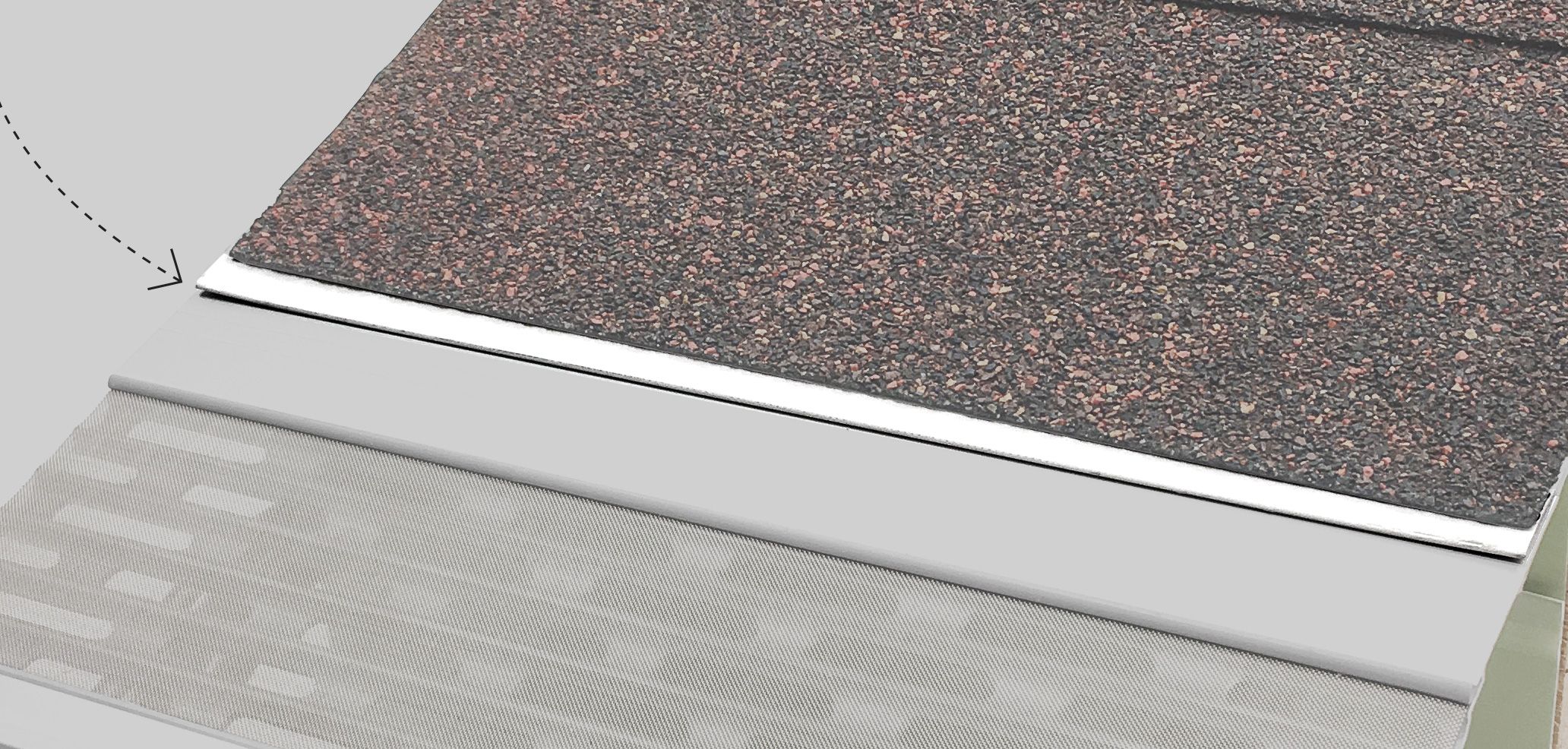
3. Fascia Clip on a Gutter Guard
A fascia clip helps you secure your gutter guards so that you don’t need to lift or alter your roof shingles. Though this is an option add-on, we think it’s worthwhile for the following reasons:
- Added stability: The fascia clip provides an extra point of attachment for the gutter guard and makes the system more stable.
- Noninvasive installation: The clip attaches to the fascia board so that you don’t need to disturb other roofing materials.
- Versatility: You can use fascia clips with a number of different gutter guard styles and materials.
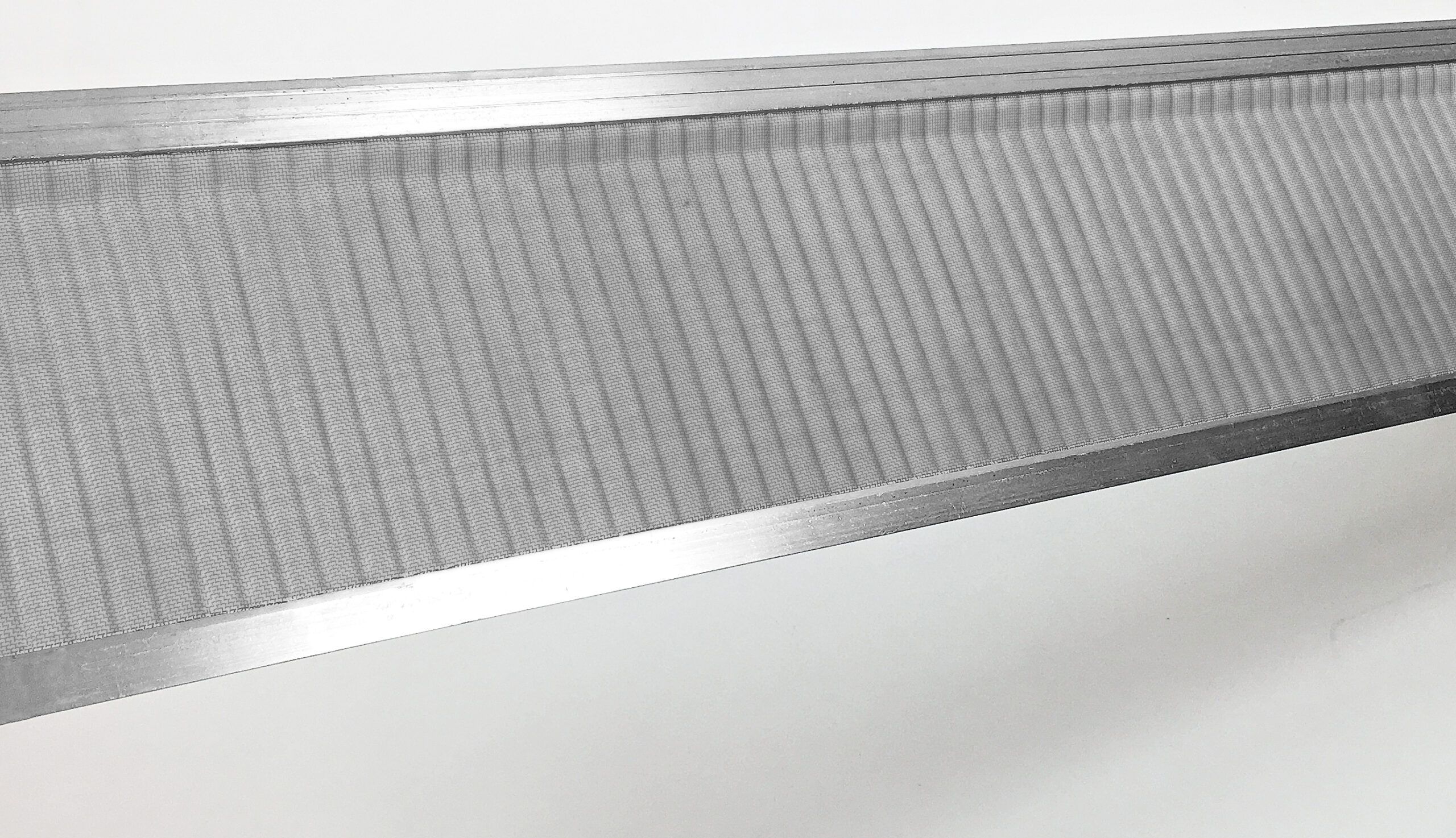
DIY Gutter Guards
Do-it-yourself enthusiasts can install their own gutter guards for about $3 per foot, and the results can be nearly as sturdy as professional installations. Keep the variables below in mind while you consider tackling this project yourself:
- Cost-effectiveness: DIY gutter guards can offer reliable protection at a fraction of the cost of professionally installed guards.
- Installation ease: These guards are easy to install, and don’t usually require any special tools or skills.
- Mesh design: Products such as the Raptor by Gutterglove use a corrugated pattern to stiffen mesh, which enhances the system’s durability and effectiveness.
- Support structure: Some DIY options feature a thin sheet-metal support under the mesh for additional stability.
Carefully follow any manufacturer’s installation instructions and take necessary safety precautions when working on ladders or roofs. If you’re unsure about your ability to install gutter guards safely, consult a professional.
Professional Gutter Guards
If you’re uncomfortable working on a ladder for an extended period of time or prefer the knowledge and warranty protection that comes with expert help, you can hire professional gutter guard installers. Two standout companies meet the criteria outlined above, including stainless-steel micromesh and anodized aluminum frame construction:
- Gutter Guards America: GGA offers a stainless steel, micromesh screen with an aluminum frame. This creates an effective filtration system with a sturdy supporting structure.
- HomeCraft Gutter Protection: HomeCraft offers an impressive stainless steel mesh and aluminum frame. It also includes raised screen technology, which helps improve water flow.
Professionally installed gutter guards cost more than DIY guards, but they can lead to savings by preventing damage and reducing the amount of maintenance you have to do. Keep these additional variables in mind when considering professional installation:
- Cost: Expect to pay between $3 and $10 per linear foot for labor and $5 to $10 per linear foot for materials.
- Expertise: Professionals have the tools and experience to execute proper installation.
- Time savings: Professional installation typically takes less time than a DIY project.
- Warranty coverage: Professional products usually come with extensive warranties, which adds another layer of security to your investment.
Additional Gutter Guard Considerations
Homeowners who are considering professional gutter guard installation should also think about variables such as necessary maintenance and care.
Maintenance and Care
Gutter guards significantly reduce the need for cleaning, but they don’t eliminate maintenance requirements entirely. You should regularly perform the tasks below.
- Clear surface debris: Use a leaf blower or garden hose to remove any large debris that accumulates on top of the guards.
- Monitor for damage: Note any changes in the condition of your gutters and guards, and address any signs of wear or damage immediately.
- Perform visual inspections: Regularly check your gutters and guards from the ground for any visible issues.
- Schedule professional check-ups: Hire a professional to inspect and clean your gutter system annually, especially if you have overhanging trees.
You can extend the life of your gutter guards by following these steps. You can also avoid the financial impact of potential damages and repairs.
